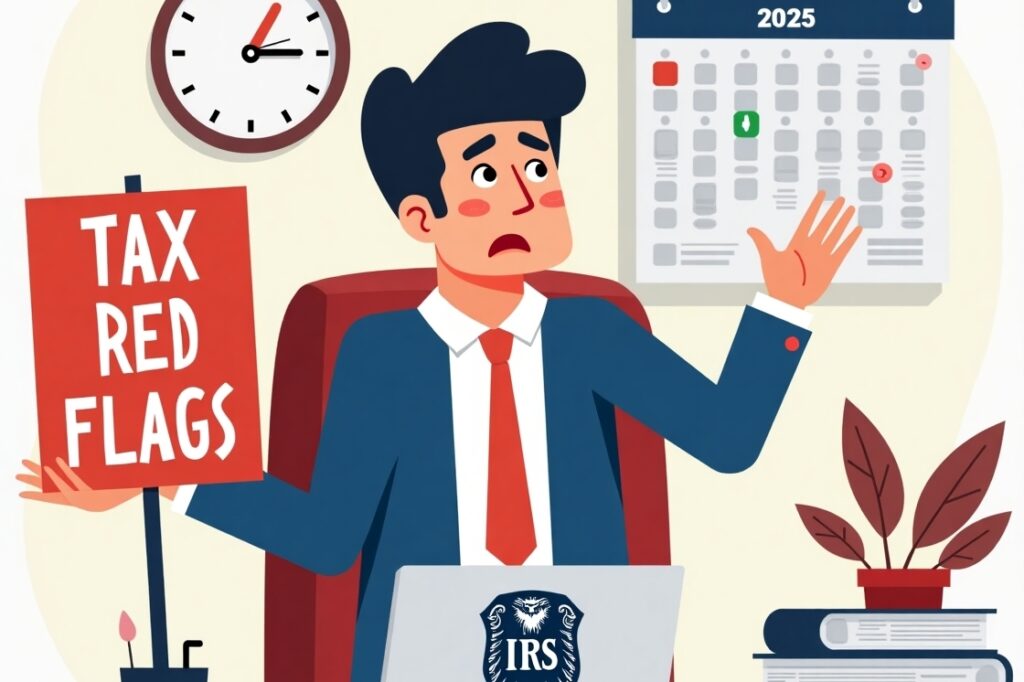Freelancing in the U.S. offers freedom, flexibility, and the potential for great earnings, but it also comes with the responsibility of handling your own taxes. As we enter the 2025 tax season, it’s critical for independent contractors, gig workers, and self-employed professionals to understand the IRS’s expectations. Making tax mistakes can lead to audits, penalties, and delayed refunds. Here’s a freelancer-focused checklist to help you steer clear of the most common IRS red flags this year.

1. Underreporting Income
One of the most common and easily traceable mistakes freelancers make is underreporting income. The IRS receives 1099-NEC and 1099-K forms directly from platforms like Upwork, Fiverr, DoorDash, and PayPal. If you fail to report that income, the IRS will flag the discrepancy. Always cross-check your records with the forms sent to you and report your gross earnings — even if clients didn’t issue a 1099.
2. Excessive Deductions Without Documentation
Yes, freelancers can deduct many business expenses — home office costs, internet, software subscriptions, mileage, etc. But deducting aggressively without proper receipts or logs is a red flag. The IRS wants proof. If you’re deducting 80% of your phone bill or claiming your entire living room as a home office, be ready to justify it with clear documentation.
3. Forgetting to Pay Quarterly Estimated Taxes
Freelancers are generally required to pay estimated taxes quarterly. If you skip these payments or miss deadlines, you might owe penalties. The IRS expects timely estimated payments based on your projected annual income. Set calendar reminders for the due dates: April 15, June 15, September 15, and January 15 (of the following year).
4. Mixing Business and Personal Finances
Using the same bank account or credit card for both personal and business expenses can cause confusion and look unprofessional to the IRS. This makes it harder to track deductible expenses and increases the chance of errors. Open a separate business account to simplify tracking and show you’re operating a legitimate business.
5. Not Filing a Schedule C or Self-Employment Tax
Some freelancers forget that they’re considered self-employed and must file a Schedule C along with their Form 1040. You also need to pay self-employment tax (15.3%) to cover Social Security and Medicare. Failing to do so is a major IRS red flag. Use tax software or hire a tax pro who understands the gig economy to ensure compliance.
Final Thoughts
Freelancing gives you control over your work life, but that control comes with the responsibility of being your own bookkeeper, tax filer, and accountant. By proactively addressing these five red flags, you can avoid audits, reduce stress, and keep more of your hard-earned money. The IRS is increasing its focus on digital workers and gig income in 2025, so staying informed and organized isn’t optional — it’s essential.
If you’re unsure, don’t go it alone. Consider working with a tax professional who specializes in self-employed individuals in the U.S. Their advice could save you far more than their fee.
